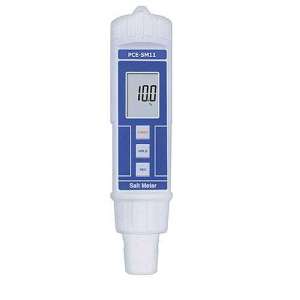Salinometers
A measuring instrument designed to measure the salinity, or dissolved salt content, of a solution. Salinity affects both the electrical conductivity and the specific gravity of a solution, a salinometer usually consists of a meter or hydrometer and some means, to convert those readings into values that indicate salinity measurements.
Origin
The first device to make this type of measurements was devised by several oceanographers, the Wenner-Smith-Soule salinometer was built in 1930 and in 1934, it was incorporated into the International Ice Patrol Boats. In 1961, Bruce Hamon and Neil Brown, oceanographers at Australia's Commonwealth Science and Industrial Research (CSIRO), developed a portable model that weighs only 15 kilograms, is replaced by traditional oil bath thermostats with a thermistor that could alter the electrical resistivity as well as temperature changes that took place. and that it had an accuracy level of 0.003%. Further improvements to the salinometer were made in 1975 by Tim Dauphinee of the National Council of Canada in Ottawa to create a laboratory model that is still widely used since 2011.
Unit of measurement
Salinity is traditionally expressed in parts per thousand, considering approximately the density as the unit corresponds to grams of salt per liter of solution. In analytical chemistry, salinity is expressed in mg/l or ppm. In 1978, when from the beginning of the twentieth century the reference to chlorinity was used, salinity or halinity were expressed as ‰ on the basis of electrical conductivity in reference to a sample of artificial seawater used as a standard. The new Practical Salinity Scale was subsequently further refined by oceanographers around the world with the introduction of the "ups" or "PSU" unit of measurement , corresponding to the relationship between the conductivity of the seawater sample and that of a standard KCl solution consisting of 32.4356 grams of salt dissolved in 1 kg of solution at 15 °C. These values are dimensionless, but 35 psu is assigned to salinity equivalent to 35 grams of salt per liter of solution.
Main utilities
· A salinometer measures the amount of salt left after seawater desalination.
· A salinometer can measure the amount of table salt in a solution.
· Some of the highest-tech salinometersin the world are used in desalination plants to ensure safe water for human use.
Main designs according to the utility
· Food salinometer
It is designed to measure the salt content in semi-solid foods, such as meat, cold cuts, cheeses, salads, etc. The equipment measures electrical conductivity, which is dependent on salt content. Each dish or type of food has a specific salt content to ensure a suitable taste. The salinometer allows to guarantee the same salt point in all processes, products or dishes; the user can create their own table of contents in salt with this meter.
· Salinometer for unsaturated solutions
With this device, the salt content in unsaturated solutions can be quickly and accurately determined. Measurement values are indicated as a percentage digitally on the screen (max. 12 % by weight). Thanks to automatic temperature compensation, high measurement accuracy of the salinometeris achieved.
· Salinometers for purified water
It is specially designed to check the conductivity of purified water, integrates a temperature sensor for optimal compensation of this variable.
Salinómetro PCE-SM 11

Product Data Sheet:
Price:
€290.28 (inc. VAT)
